Bio Native

How do invasive species interact with climate change to threaten native biodiversity ?
Invasive species and climate change pose significant threats to native biodiversity by exacerbating range expansion, altering competition, increasing predation pressure, degrading habitats, facilitating disease transmission, disrupting mutualisms, having synergistic effects, depleting resources, displacing keystone species, and reducing ecosystem resilience. Integrated management strategies are crucial for mitigating these threats and include habitat restoration, invasive species control, protection of keystone species, and conservation of diverse genetic pools within native species to enhance their adaptability.

How do invasive species affect biodiversity ?
Invasive species can have a significant impact on native biodiversity, both positively and negatively. They can outcompete and replace native species, leading to changes in community structure and ecosystem function. Invasive species can also cause damage to infrastructure and human health through the spread of disease or destruction of habitats. Management strategies for invasive species include prevention measures such as quarantines and biosecurity protocols, as well as control measures such as eradication programs and habitat restoration. It is important to consider the costs and benefits of each strategy when developing a management plan.

How can we conserve and protect biodiversity in our local communities ?
The text discusses the importance of biodiversity and provides various ways to conserve and protect it in local communities. It suggests creating awareness through education, using media platforms, practicing sustainable living by reducing waste and conserving energy, protecting habitats by preserving natural areas and controlling invasive species, supporting local conservation efforts through volunteering and advocating for policies, and promoting eco-friendly practices in businesses. The goal is to contribute to a healthier planet by taking small actions towards biodiversity conservation.
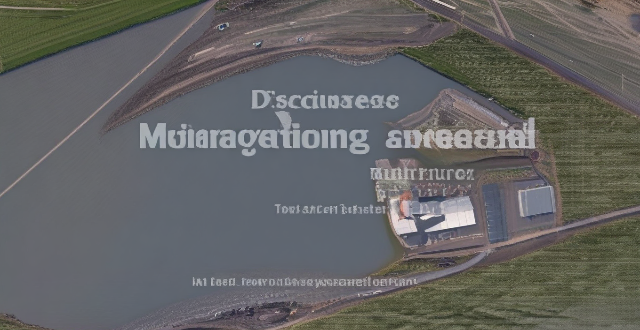
What are some emerging trends in the field of energy storage materials research ?
The text discusses the latest trends in energy storage materials research, focusing on solid-state batteries, flow batteries, metal-air batteries, supercapacitors, redox flow batteries, hybrid energy storage systems, nanostructured materials, smart grid integration, thermal energy storage, and organic/bio-based materials. Each section provides a brief overview of the technology's advantages and current research challenges.

How much does it cost to obtain a tourist visa ?
This detailed guide outlines the cost implications and requirements for obtaining a tourist visa to the People's Republic of China as of July 2024, using the process in the United States as an example. The guide covers visa types, required documents, additional requirements, cost implications, and the application procedure. It also highlights recent simplifications in the document requirements and emphasizes the importance of meeting all specified requirements and being prepared for associated costs.

How do climate losses and damages affect biodiversity ?
The article discusses the impact of climate change on biodiversity, focusing on how extreme weather events, temperature changes, sea level rise, and altered precipitation patterns affect habitats and species. It emphasizes the need for global efforts to reduce greenhouse gas emissions and implement conservation strategies to protect vulnerable ecosystems and species.

What are some successful examples of biodiversity restoration projects ?
This article provides examples of successful biodiversity restoration projects, including the Great Green Wall Initiative in Africa, the Mau Forest Restoration Project in Kenya, the Wolong Giant Panda Reserve Expansion in China, the Coral Reef Restoration Program in the Philippines, and the Amazon Rainforest Conservation Project. These projects aim to restore degraded ecosystems through various techniques such as reforestation, reintroduction of native species, and habitat restoration, with benefits including improved livelihoods for local communities and preservation of biodiversity hotspots.

What is biodiversity and why is it important ?
Biodiversity is the variety of life on Earth, including ecosystems, species, and genetic variation within species. It plays a vital role in supporting ecosystem services, ensuring food security, providing medicinal resources, enriching cultural heritage, and enhancing resilience to environmental changes. The loss of biodiversity can lead to reduced ecosystem function, increased vulnerability, economic impact, and loss of future options. Protecting biodiversity involves habitat protection, sustainable use, legislative measures, public awareness, and research and monitoring. Conserving biodiversity is essential for maintaining the balance of ecosystems and ensuring that future generations can enjoy the benefits provided by the variety of life on Earth.

How do urban greening projects affect biodiversity in cities ?
Urban greening projects, which aim to increase the amount of vegetation within cities, can have significant effects on urban biodiversity. These projects typically involve planting trees, creating parks and green spaces, and restoring natural habitats. Here are some ways in which these initiatives can influence the variety of species living in urban areas: - Increased Habitat Availability: By adding more greenery, urban greening provides additional habitats for a wide range of organisms. This includes plants, insects, birds, and small mammals that can thrive in these newly created environments. - Mitigation of Urban Heat Islands: Vegetation helps reduce the urban heat island effect by providing shade and releasing water through transpiration, creating cooler microclimates that are more suitable for certain species. - Enhanced Food Sources: Flowering plants attract pollinators like bees and butterflies, supporting their populations and contributing to the health of the overall ecosystem. - Increased Water Quality and Availability: Green roofs and rain gardens help manage stormwater runoff, reducing pollution and providing water sources for urban wildlife. - Promotion of Biodiversity through Education and Awareness: Parks and green spaces serve as outdoor classrooms, offering opportunities for education about ecology and conservation. While urban greening projects offer numerous benefits for biodiversity, they also present challenges such as potential introduction of invasive species, maintenance requirements, and resource allocation trade-offs with other land uses.
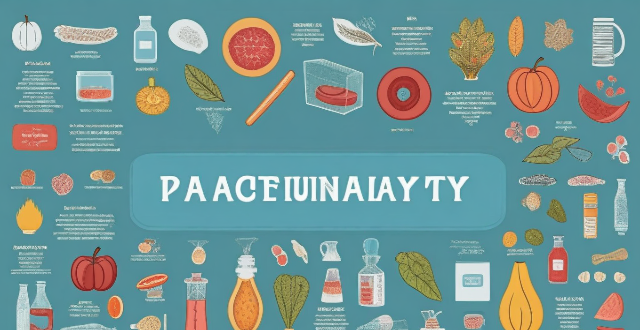
How do agricultural practices influence biodiversity ?
Agricultural practices significantly impact biodiversity, affecting ecosystem services like pollination and soil health. Monoculture reduces biodiversity due to habitat loss and pesticide use, while polyculture enhances it through diverse habitats and reduced chemical inputs. Organic farming benefits biodiversity by avoiding synthetic chemicals and promoting natural pest control, whereas conventional farming can harm it through pesticide toxicity and nutrient runoff. Land management practices like tillage disrupt soil ecosystems, while no-till farming preserves them. Water management also plays a role; sustainable practices like drip irrigation conserve water resources and support aquatic life. Adopting sustainable agricultural methods can help conserve biodiversity while maintaining productive systems.

How do celebrities manage their online presence and reputation on social media ?
Celebrities manage their online presence and reputation on social media by hiring a social media manager, maintaining consistency across platforms, engaging with fans, promoting positive messages, handling criticism gracefully, and monitoring their image. These strategies help them maintain a positive online presence while connecting with fans and promoting their work effectively.

Are there any free language learning apps that are worth using ?
There are many free language learning apps available that can help you on your journey to fluency. Some of the best ones include Duolingo, Memrise, Busuu, Rosetta Stone, and Tandem. Each app offers unique features and benefits, such as gamified learning experiences, memorization techniques, social platforms for conversation practice, and immersive environments with no translation needed. Whether you prefer interactive games or connecting with native speakers, there is an app out there that can help you achieve your language learning goals.

How can I improve my listening skills in a foreign language ?
Improving your listening skills in a foreign language is crucial for effective communication and understanding. Here are some tips on how you can enhance your listening abilities: 1. Listen Regularly to Native Speakers 2. Use Language Learning Apps 3. Take Notes While Listening 4. Practice with Audiobooks 5. Join Language Exchange Programs 6. Focus on Tone and Intonation By incorporating these strategies into your daily routine, you can significantly enhance your listening skills in a foreign language. Remember, consistency is key, so make sure to practice regularly!

Are there any free platforms for language learning ?
Language learning has become more accessible than ever before, thanks to the internet. There are numerous free platforms available for those who want to learn a new language or improve their existing skills. In this article, we will explore some of the best free language learning platforms available.

What are the top iPhone apps for learning new languages ?
The article discusses the top iPhone apps for learning new languages. It mentions six different language learning apps, each with its own unique features and benefits. The first app is Duolingo, which offers courses in over 40 different languages and uses a game-like interface to make learning fun and engaging. The second app is Babbel, which focuses on practical conversation skills and offers courses in 14 different languages. The third app is Rosetta Stone, which offers courses in over 30 different languages and uses an immersive learning approach with no translations or explanations. The fourth app is Memrise, which uses mnemonics and visual cues to help users remember new words and phrases. The fifth app is Busuu, which emphasizes conversation practice and feedback from native speakers. The sixth app is Tandem, which connects users with native speakers of the language they want to learn through private chat rooms and voice/video calls. Overall, these apps offer a variety of approaches to language learning and can help users achieve their language learning goals.

How do celebrities establish and maintain a successful personal brand ?
Celebrities establish and maintain a successful personal brand by defining their brand persona, building a strong online presence, being consistent in messaging and imagery, networking and collaborating with others, staying true to themselves, and continuously learning and evolving. A strong personal brand helps celebrities stand out in their industry and build a loyal fan base.

What are the ethical implications of genetically modified organisms (GMOs) on the environment ?
The article discusses the ethical implications of genetically modified organisms (GMOs) on the environment, including their potential impact on biodiversity, risk of environmental disasters, and broader economic and social implications. It highlights concerns such as loss of native species due to competition for resources, genetic contamination, and habitat destruction; the potential spread of pests and diseases, ecosystem disruption, and genetic pollution; as well as issues related to monopolies and access to seeds, dependence on corporations, and loss of autonomy for farmers. The conclusion emphasizes the importance of considering these ethical considerations in decisions regarding the development and deployment of GMOs to prevent irreparable harm to ecosystems and communities.

How does immigration policy affect the job market ?
Immigration policy affects the job market by increasing labor force, attracting skilled workers, and allowing unskilled immigrants to work in industries with labor shortages. This can benefit employers by providing access to a larger pool of potential employees, filling critical skill gaps, and reducing costs due to increased competition among workers. However, it also presents challenges for native-born workers such as increased competition for jobs, potential wage suppression, and concerns about cultural assimilation and language barriers. Policymakers must consider these factors when developing immigration policies that serve the interests of both employers and workers.

What is the best way to practice speaking a new language ?
The article provides a summary of the best ways to practice speaking a new language, which include immersing oneself in the language, speaking frequently and without fear of making mistakes, practicing regularly, focusing on pronunciation and fluency, and learning through real-life conversations. Consistency and practice are emphasized as key factors in improving language skills.
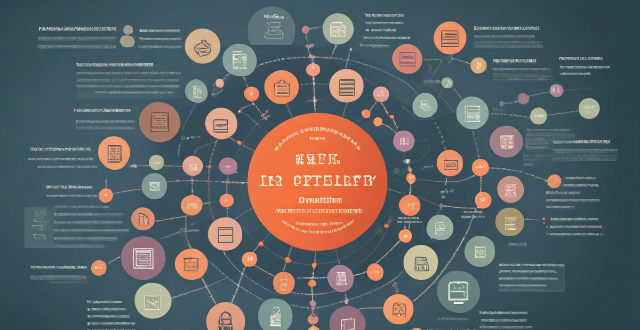
How important is immersion when trying to learn a foreign language quickly ?
Immersion is crucial for rapid language acquisition, providing contextual learning, immediate feedback, authentic pronunciation, cultural understanding, motivation, and practical tips like language exchange programs and social integration.

What are the potential long-term effects of global warming on ecosystems ?
Global warming, caused by greenhouse gases, can have severe impacts on ecosystems worldwide. Potential long-term effects include species extinction, changes in distribution and abundance of species, alteration of ecosystem functions, loss of habitat due to rising sea levels, and invasion of non-native species. These impacts underscore the need for action to mitigate climate change and protect ecosystems.

How can I improve my vocabulary in a new language ?
Improving your vocabulary is essential for fluency and understanding when learning a new language. Some tips include reading extensively, watching TV shows and movies in the target language, using flashcards, practicing with native speakers, and keeping a vocabulary journal. Consistency and patience are key, as well as not being afraid to make mistakes.
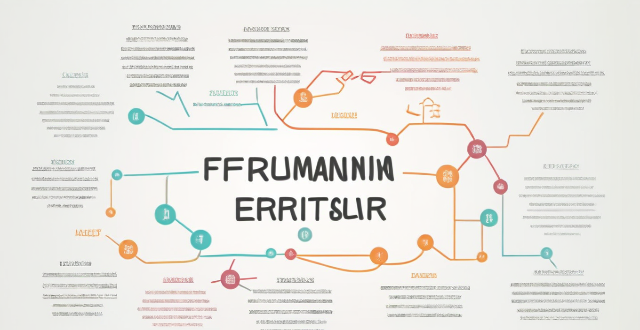
Is it possible to become fluent in a foreign language in just a few months ?
Becoming fluent in a foreign language within a few months is possible but depends on various factors such as prior language experience, time dedication, effective learning resources and methods, favorable language difficulty, strong motivation, and a proactive approach to learning. Strategies for rapid language learning include setting clear goals, creating a study routine, practicing with native speakers, using technology, and embracing mistakes and persevering.

How do extreme weather events, such as hurricanes and droughts, affect biodiversity ?
Extreme weather events, such as hurricanes and droughts, have significant impacts on biodiversity. These events can cause habitat loss, species displacement, and even extinction. For example, hurricanes can cause flooding, which can wash away soil and vegetation, leaving behind barren landscapes. Droughts can cause water levels to drop, leading to the death of aquatic plants and animals that rely on water for survival. When habitats are destroyed or altered by hurricanes or droughts, animals may be forced to move to new areas in search of food and shelter. This can lead to competition with native species for resources and may ultimately result in the displacement of certain species from their natural habitats. In some cases, extreme weather events can lead to the extinction of certain species. If a species is already endangered or has a small population size, a single extreme weather event could be enough to push it over the edge toward extinction. Additionally, if an entire ecosystem is destroyed by a hurricane or drought, it may take years or even decades for it to recover, putting many species at risk during that time.

Can more lenient immigration policies lead to an increase in crime rates ?
The relationship between lenient immigration policies and crime rates is complex, with studies showing mixed results. Some research indicates that immigrants may have lower crime rates than native-born individuals, but this can change over time as they integrate into their new communities. Socioeconomic factors, such as poverty and access to opportunities, can influence crime rates among immigrants, but community support and integration programs can help mitigate these impacts. Legal and policy frameworks, including sanctuary cities and immigration enforcement, also play a role in shaping crime rates. Policymakers must balance security concerns with humanitarian considerations and promote integration and inclusion to ensure public safety while upholding humanitarian values.

How effective are reforestation efforts in offsetting carbon emissions ?
Reforestation efforts can effectively offset carbon emissions by sequestering carbon dioxide through photosynthesis. Factors influencing its effectiveness include the type of trees planted, location and soil quality, management practices, and timescale. Challenges such as saturation points, land availability, biodiversity concerns, and water resources impact also need to be considered. A balanced approach combining reforestation with other strategies is necessary for meaningful climate change mitigation.

How do I improve my pronunciation in a foreign language ?
Improving your pronunciation in a foreign language is essential for effective communication and can greatly enhance your overall language skills. Here are some tips on how to improve your pronunciation: listen carefully, practice with a native speaker, use pronunciation guides and apps, record yourself and analyze your mistakes, and be consistent and persistent. By following these tips, you can greatly improve your pronunciation in a foreign language.

In what ways do dams and reservoirs affect downstream water ecosystems ?
Dams and reservoirs significantly alter downstream water ecosystems by changing water flow, trapping sediments, disrupting nutrient cycles, fragmenting habitats, and affecting biodiversity.
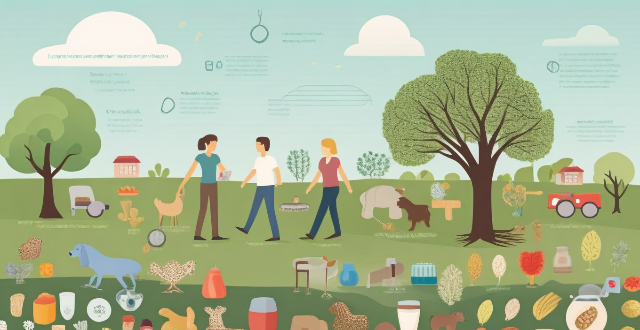
What are the potential risks associated with biosafety breaches ?
Biosafety breaches pose significant risks to human health, the environment, and biodiversity. These risks include infection through direct exposure or aerosol transmission, toxicity from microorganism-produced toxins, allergies, ecosystem disruption, biodiversity loss, genetic exchange, agricultural impacts, trade and travel restrictions, public fear, liability and compensation issues, and ethical concerns regarding genetically modified organisms. Facilities handling hazardous biological materials must implement strict safety measures to prevent these incidents.

What strategies are effective in maintaining and expanding urban green spaces ?
Strategies for maintaining and expanding urban green spaces include advocacy, policy implementation, funding allocation, community involvement, innovative design, collaboration, and monitoring. Efforts should focus on educating the public, engaging stakeholders, setting minimum standards, seeking grants, encouraging philanthropy, organizing volunteer programs, promoting community gardens, using native plants, fostering inter-agency cooperation, partnering with private sectors, conducting regular inspections, establishing performance metrics, and creating feedback mechanisms.